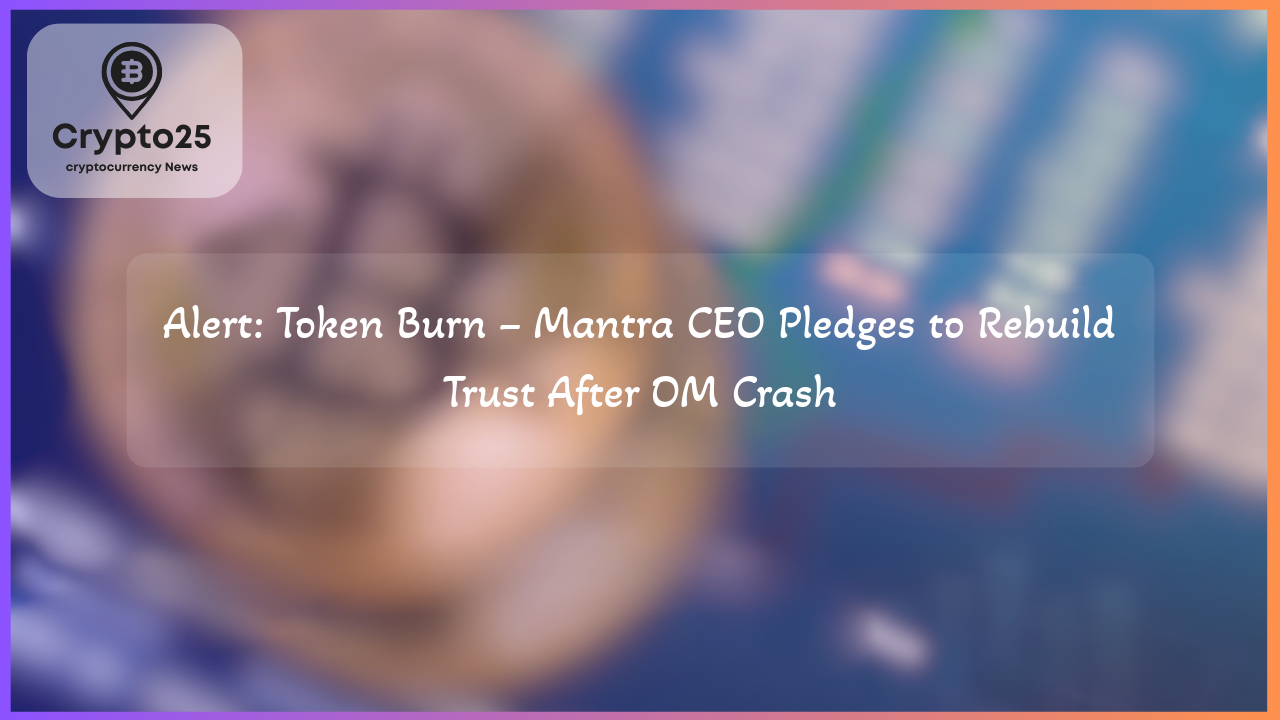
Mantra CEO John Patrick Mullin recently announced a significant decision to burn his allocation of OM tokens in an effort to regain investor trust following a dramatic collapse in the token’s value. This announcement comes as the Mantra protocol navigates turbulence while seeking to stabilize its community and reinforce confidence in its long-term vision in the competitive blockchain landscape.
## Mantra’s OM Token Burn Initiative and Its Impact on Investor Confidence
In a statement released on X (formerly Twitter) on April 15, John Patrick Mullin revealed his intention to burn his future allocation of OM tokens, part of a 300 million OM token reserve set aside for the team. This move, according to Mullin, would allow the Mantra community to decide whether the tokens should eventually be re-earned once the project achieves its recovery milestones. Mullin emphasized that this decision reflects his commitment to prioritizing the success of the protocol and its stakeholders.
Currently holding approximately 772,000 OM tokens, which make up less than 1% of the total circulating supply of over 80 million OM tokens, Mullin emphasized his transparency regarding the burn process. However, he deferred disclosing any additional details about his broader token stake until the token burn program is ready for execution. The burning process aims to reduce outstanding supply, potentially enhancing the token’s scarcity and addressing concerns from the community.
Mantra, built as a Layer 1 blockchain using the Cosmos SDK, seeks to bridge the gap between decentralized finance (DeFi) and regulated markets by focusing on tokenizing real-world assets. Its recent achievement of securing a Virtual Asset Service Provider license from Dubai’s Virtual Assets Regulatory Authority (VARA) places it on the radar of heavily regulated global financial markets.
## The OM Token Price Crash: A Detailed Look
The dramatic collapse of OM token prices on April 13 sent shockwaves through the blockchain world. According to Tokenomist data, the token suffered a steep decline, collapsing over 90% in value as it fell from approximately $6.30 to under $0.50 within a single trading day. This event wiped out $5.5 billion from the token’s market capitalization, pulling it down from $6 billion to a mere $530 million in just hours. Though OM has since experienced a modest price rebound, now trading around $0.81 with a market cap close to $800 million, it remains significantly below its previous peak.
Mullin attributed this collapse to sudden liquidations executed during a period of low trading liquidity on centralized cryptocurrency exchanges. He emphasized that no tokens were sold by the team or major investors, noting that all team-related tokens remain locked under an established vesting agreement visible on-chain. Nevertheless, the abrupt crash has brought comparisons to larger collapses, such as the Terra ecosystem implosion of 2022, due to suspicious fund movements and wallet activity leading up to the event.
| Title | Details |
|---|---|
| Market Cap Before Crash | $6 Billion |
| Market Cap After Crash | $530 Million |
| Circulating Supply | 80 Million OM |
## Reactions to Liquidity Shocks and Plans for Recovery
As details continue to emerge, blockchain analysts and community members have speculated about the circumstances surrounding the collapse. Over $70 million worth of OM tokens was reportedly moved to exchanges via a single intermediary wallet shortly before the crash, raising eyebrows among observers. Some have suggested the possibility of insider activity or wallet hacks, although definitive conclusions are yet to be drawn.
Mantra’s leadership has been quick to clarify these matters. Mullin has pledged to conduct a transparent investigation into the role of centralized exchange liquidations and promised a detailed report on the events. His reassurances have underlined that Mantra’s tokenomics remain intact, with all token flows independently verifiable through on-chain data. This transparency is crucial to addressing the concerns of both retail and institutional investors.
As the platform seeks to navigate this critical chapter, Mantra remains focused on its broader mission of marrying DeFi innovation with regulatory-grade infrastructure. By reducing token supply through the proposed burn initiative and addressing key liquidity concerns, the protocol is setting a clear tone for its recovery efforts.
## Conclusion: A Cautious Path Forward for Mantra and OM Token Holders
The recent OM token debacle has undoubtedly shaken investor confidence in the Mantra ecosystem. However, through proactive measures such as token burns, transparent communication, and an emphasis on regulatory compliance, the team is taking strides toward rebuilding trust. While challenges persist, Mantra’s commitment to investigation and innovation could ultimately help it emerge stronger in the ever-evolving blockchain sector. The coming months will be pivotal as both the project and its community closely observe developments and decisions.
